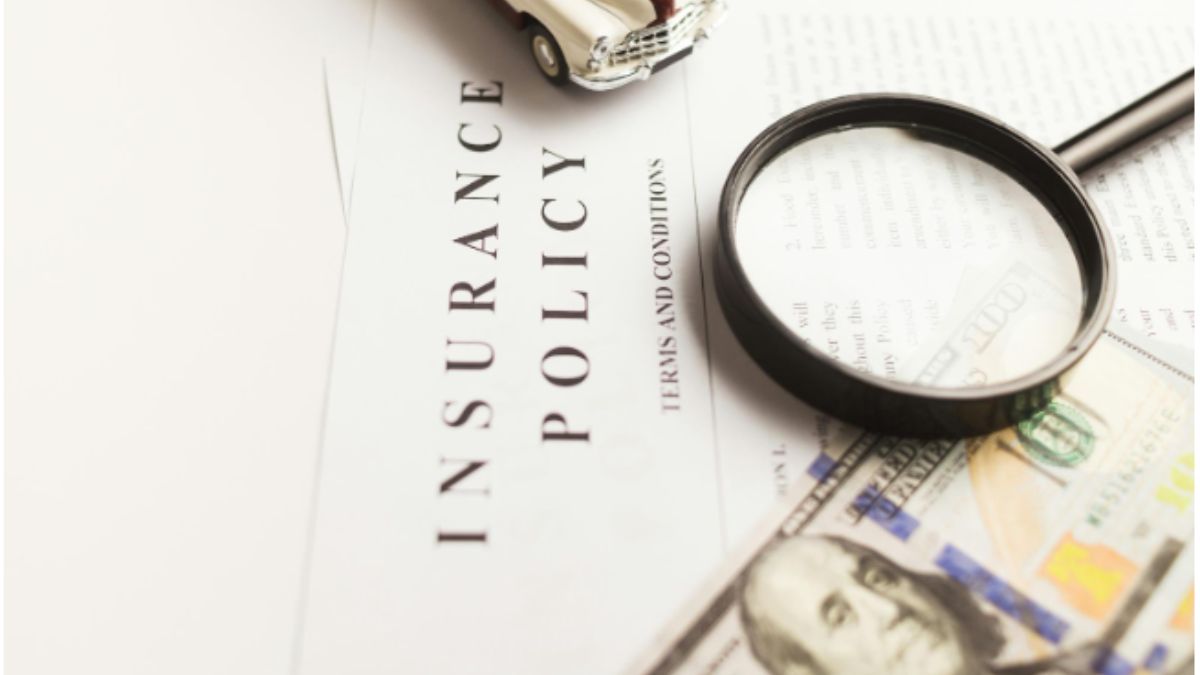INSURANCE
The Essentials of Auto Insurance Everyone Should Know

Having car insurance is really important to protect your money by taking care of things like liability for accidents and damages that can happen while you’re driving on the roadways. It gives drivers a safety cushion to help with costs related to incidents and fixing their cars after crashes. Understanding the policy options deductibles and coverage limits is crucial for ensuring you are covered properly. It is also essential to review and adjust your policies so they match your evolving needs and give you peace of mind during times.
What does auto insurance entail?
Car insurance is like a safety net for car accidents that can save us from financial burdens caused by repair costs and medical bills resulting from crashes without coverage in place which could put us in a dire fiscal situation when not anticipated. It serves as a layer against unanticipated events by offering monetary support to vehicle owners when needed the most but it is important to remember that insurance companies do not always approve every claim right away. Knowing what to do when car insurance denies claim is important to avoid being caught unprepared and left without any options.
Car insurance consists of liability coverage and additional protections customized to meet requirements based on factors such as driving behaviors and financial planning strategies to safeguard against liabilities arising from harm caused to others.
Different Kinds of Car Insurance Coverage
Liability coverage is essential in states. It is mandatory in most cases to protect against expenses resulting from injuries or damages caused by your fault in an accident but does not include coverage for your own expenses incurred as a result of the incident.
Getting collision insurance is very important for fixing your car after an accident of who caused it whether you hit another vehicle or a stationary object because it helps cover repair expenses and keeps you on the road smoothly.
Comprehensive insurance extends beyond accidents. It includes various situations such as theft and damage caused by vandalism or natural disasters as well. For example, if a tree collapses onto your car in a storm scenario with coverage, you won’t have to bear the cost alone.
Uninsured or underinsured motorist coverage is extremely important in cases where drivers do not have insurance coverage, in accidents. A significant number of drivers may be uninsured as emphasized in studies conducted by the Insurance Research Council, making this insurance type a backup plan.
Factors that influence the cost of insurance premiums
Insurance premiums are calculated based on factors that insurance providers evaluate to gauge the risks associated with insuring a persons property or health insurance policies. A driving record can influence insurance premiums as individuals with a driving record typically receive rates as a form of appreciation for their safe driving habits. Furthermore, driving behavior patterns and historical summaries also affect policyholders premium rates, either positively or negatively, due to the risk factors in insuring them against losses stemming from accidents or unforeseen circumstances. It’s important to consider that the location where you reside can impact the price of your insurance premiums, as areas may have varying risk levels related to factors such as crime rates or natural calamities. Additionally the kind of car you own and your recent financial habits indicated by your credit history can also influence the amount you spend on insurance based on how insurers assess and calculate pricing strategies tailored to circumstances using statistical analysis methods.
Urban dwellers might encounter increased insurance expenses due to the likelihood of accidents in bustling city settings as opposed to quieter areas with minimal traffic congestion roads often pose greater risks for inexperienced teenage drivers who are considered high risk individuals and typically face elevated premium costs as a result As drivers gain more experience and establish a positive driving history over time insurance premiums may decrease However it is crucial to stay vigilant and keep an eye on these factors in order to manage and control expenses effectively
Examining Your Insurance Coverage
Checking your insurance policy is an idea as it can offer you benefits in the long run. Life circumstances are always changing. Whether you’re moving to a location, acquiring assets, or reaching significant life milestones like starting a family. All of these events signal the need, for an updated insurance policy. Taking the time to review your policy annually can assist you in discovering deals and customizing coverage to suit your current needs as well as identifying opportunities to save money.
Updating your insurance policy not only ensures that you’re covered but also affects how much you pay each month for it. For example, reducing your vehicle coverage or reassessing your policy after moving can result in changes to your expenses. Sources that highlight the importance of updating policies stress the need to inform your insurance company about any changes in your household to align your expenses with your lifestyle choices.
Legal obligations by the government in each state.
Understanding the obligations for auto insurance in your state is crucial to comply with the law and ensure you are properly protected financially and legally as a vehicle owner because each state has its unique requirements that can differ significantly in terms of coverage and documentation needed.
In states such as Virginia and Maine, have approaches when it comes to auto insurance requirements; Virginia allows the uninsured motorist fee option while Maine mandates broader coverage policies to ensure varying levels of protection for drivers. They believe that staying knowledgeable, about your states regulations can guide you in making choices regarding your auto insurance needs.
Tailoring Your Insurance Plan
For drivers to have control over their auto insurance coverage. Tailor it to their needs based on how often they use their vehicle and their financial preparedness for accidents as well as the risks in their specific location is highly important to ensure they have the right level of protection and make wise financial decisions to avoid unnecessary expenses while giving them peace of mind particularly beneficial for those who don’t drive often or live in areas prone, to severe weather conditions.
INSURANCE
TRT and Your Insurance Plan

Testosterone Replacement Therapy (TRT) has become a significant topic of conversation, particularly for those who rely on it for a better quality of life. As an important treatment for conditions like hypogonadism, TRT can be a crucial component of a patient’s healthcare regimen. It coverage for this therapy is not always guaranteed and varies widely from plan to plan. Understanding the nuances of your insurance coverage for TRT can be daunting but is essential in managing your healthcare expenses. Below, we unravel the complexities of its coverage for TRT and provide strategic insights into navigating the healthcare system.
Understanding TRT and Why Insurance Coverage Varies
Testosterone Replacement Therapy (TRT) helps manage symptoms like fatigue, muscle loss, and low libido caused by clinically low testosterone levels. However, it coverage for TRT isn’t consistent. Some providers see it as a necessary medical treatment, while others classify it as a lifestyle drug. This difference often depends on lab results and specific symptoms, leading to varied decisions on coverage, even between patients with similar conditions.
The landscape of TRT with insurance is also affected by shifting healthcare laws and changes to insurance formularies. These updates, driven by cost or new guidelines, can limit access to covered treatments. Patients often face unexpected expenses when policies change, so staying informed about coverage details is key to avoiding disruptions in care.
Navigating Insurance Plans: Coverage Criteria for TRT
It providers set specific criteria for TRT coverage, including documented evidence of low testosterone levels and symptoms of testosterone deficiency. Insurers may vary in thresholds, causing confusion for patients. Pre-existing conditions also play a role in eligibility, and comprehensive medical records are crucial.
Different plans have distinct processes for filing claims and appeals, but the complexity of these documents can make patients uncertain. Timeliness is another factor in ensuring coverage, as patients must adhere to deadlines for submitting necessary documentation and claims. Organization and attention to detail are essential in managing TRT-related insurance matters.
Advocating for Yourself: Communicating with Insurance Providers About TRT
Advocacy is crucial for securing insurance coverage for TRT, starting with a candid conversation with your healthcare provider about the therapy’s necessity. Understanding insurance jargon and navigating insurance plans is essential. Asking precise questions and recording conversations can help resolve discrepancies.
Explore programs with insurance options that can alleviate financial burden, offering partial or full coverage for TRT treatments. Advocating for TRT coverage may involve appealing a denied claim, which requires understanding the appeals process, deadlines, and required documentation. Maintaining persistence and meticulous follow-through is essential for overturning initial denials.
The Cost of TRT Without Insurance: What to Expect

When insurance isn’t available for treatment for TRT, patients must bear the full cost of treatment out-of-pocket, which can be substantial. Alternatives include pharmaceutical company patient assistance programs, sliding scale fees, and payment plans. Comparison shopping can also yield cost savings, as treatment and lab work prices can vary between providers.
It’s crucial to balance affordability with the efficacy of therapy to avoid subpar treatment outcomes. Opting for cheaper alternatives without due diligence can lead to subpar treatment outcomes. Balancing affordability with therapy efficacy is a critical consideration when pursuing TRT without insurance coverage.
Looking Ahead: The Future of TRT Insurance Coverage and Healthcare Policy Changes
The healthcare and its landscape is constantly evolving, with new policies and reforms shaping access to treatments like testosterone replacement therapy (TRT). As awareness of TRT’s benefits grows, its policies may change to expand coverage for more patients. It’s crucial for patients and healthcare providers to stay informed about these changes and their potential impact on TRT coverage.
Medical research advancements and advocacy groups can influence policy shifts, as evidence-based guidelines can influence insurers to adopt more inclusive coverage policies. Healthcare debates at state and federal levels may redefine insurance mandates regarding TRT, so staying informed and participating in healthcare conversations can empower patients and facilitate greater access to necessary treatments.
Overall, understanding and managing the intricacies of insurance coverage for TRT call for an informed and proactive approach. Effective communication with healthcare providers and insurance companies, coupled with a solid grasp of policy details, are instrumental in securing and maintaining access to TRT. As the healthcare landscape evolves, staying attuned to changes and advocating for comprehensive coverage will be key in ensuring that those needing TRT can obtain this vital therapy.
INSURANCE
Vehicle Crash Claims: How to Get Compensation for Your Damages

A car crash can be scary and confusing. Who pays for the damage? How do you get fair compensation?
Understanding vehicle crash claims is important. This guide explains how to recover losses after a crash. It covers what to do, what to avoid, and how to seek help.
Knowing your rights can make the process easier. Do you know the steps to file a claim? Keep reading to learn how to get the compensation you deserve.
Understanding Vehicle Crash Claims
A vehicle crash claim helps victims recover losses from an accident. It includes medical bills, car repairs, and lost wages. Insurance companies evaluate claims based on fault and damages.
Victims must gather evidence to prove their case. Photos, police reports, and witness statements are helpful. A claim can be filed with your insurance or the other driver’s.
Understanding the claim process prevents delays. Knowing your legal rights ensures you receive fair compensation. Some cases may require legal action if insurance does not cover all damages.
Laws vary by state, so it’s important to understand local regulations. Some insurance policies have limits on compensation, so reviewing your coverage is essential. Filing a claim quickly can prevent unnecessary complications.
Steps to Take After a Crash
The first step is checking for injuries. Call 911 for medical help if needed. Move to a safe place if possible.
Exchange contact and insurance details with others involved. Take pictures of the scene, including damages and road conditions. Gather witness information if available.
Report the accident to your insurance company. Seeking medical attention, even for minor injuries, is important. Keeping records of expenses strengthens your claim.
If possible, avoid discussing fault with the other driver. Even minor crashes should be reported to prevent future issues. Sometimes injuries appear days later, so monitoring your health is important.
Keep track of repair estimates and medical bills. Consulting with a legal expert early on can help clarify your rights and options.
Filing a Claim With Insurance
Contact your insurance company as soon as possible. Provide details about the crash, including date, time, and location. Submit photos and reports as evidence.
Your insurer may assign an adjuster to assess damages. Be honest about what happened, but avoid admitting fault. Keep copies of all communications and documents.
Understand your policy to know what is covered. A smooth claims process helps you get fair compensation quickly. Some claims may require additional investigation.
Delays can happen if paperwork is incomplete or if the other party disputes fault. If an insurance company offers a low settlement, negotiation may be necessary. Some policies include coverage for rental cars while your vehicle is being repaired.
Proving Fault in an Accident
Fault determines who is responsible for damages. Police reports help establish blame. Traffic laws and witness statements also play a role.
In some cases, both drivers share fault. States have different laws on fault and compensation. Comparative negligence allows partial compensation if both parties are at fault.
Gathering strong evidence supports your claim. A lawyer can help if fault is disputed. Dashcam footage can also serve as strong evidence.
Sometimes, insurance companies conduct their own investigations to determine fault. If the other driver was distracted, such as using a phone, that could affect the claim outcome. Video surveillance from nearby businesses might also be useful in proving fault.
Types of Compensation Available
Crash victims can receive different types of compensation. Medical expenses cover hospital bills and treatments. Property damage pays for car repairs or replacements.
Lost wages compensate for missed work due to injuries. Pain and suffering cover emotional distress. Some cases may include future medical costs.
The amount depends on the severity of the crash. Knowing what you can claim helps maximize compensation. Some states have caps on certain types of compensation.
Economic damages are easier to prove, while non-economic damages can be subjective. If the accident leads to long-term disabilities, victims may also qualify for future wage loss compensation. Insurance policies may have additional benefits for physical therapy or rehabilitation.
Dealing With Insurance Adjusters
Insurance adjusters investigate claims and determine payouts. They may ask for statements or medical records. Their goal is to save money for the insurance company.
Be careful when speaking to adjusters. Stick to facts and avoid admitting guilt. Do not accept a low settlement offer too quickly.
You can negotiate for a fair amount. A lawyer can handle negotiations if needed. Some adjusters may delay the process to pressure you into accepting a low offer.
Knowing your rights can help you avoid being taken advantage of. If an adjuster denies your claim unfairly, you have the right to appeal. Keeping all communications in writing can help protect your claim.
When to Hire a Lawyer
Some crash claims are simple, but others need legal help. If injuries are severe, a lawyer can help recover full compensation. Lawyers understand laws and insurance policies.
They gather evidence and handle negotiations. A lawyer can file a lawsuit if needed. Legal assistance increases the chances of a fair outcome.
Hiring a lawyer is a smart choice for complex claims. Many personal injury attorneys work on a contingency basis, meaning they only get paid if you win. A lawyer can also help if the insurance company denies your claim unfairly.
If the accident involves multiple parties, legal assistance is especially useful. A lawyer can also assist with calculating long-term damages. Consulting a lawyer early can help avoid mistakes that could weaken your claim.
Common Mistakes to Avoid
Not reporting the crash can hurt your claim. Delaying medical treatment weakens your case. Giving too much information to insurance companies can reduce compensation.
Accepting the first offer may result in a low payout. Not collecting enough evidence makes proving your claim harder. Ignoring legal deadlines can cause claim denial.
Avoiding these mistakes ensures a smoother process. Some victims underestimate the cost of future medical expenses and settle too early.
Always review settlement offers carefully before accepting. Some people assume minor crashes don’t require a claim, but hidden damages can be costly.
Waiting too long to file a claim can make gathering evidence harder. Keeping a checklist of steps to take after an accident can help avoid costly mistakes.
Navigating Car Accident Claims in Columbia
Columbia car accidents follow specific state laws for compensation. South Carolina uses a fault-based system. The at-fault driver’s insurance pays for damages.
Victims can seek compensation through insurance or legal action. South Carolina follows modified comparative negligence rules.
Legal support can help navigate local laws and maximize compensation. In Columbia, hiring an experienced car accident attorney can improve your chances of a fair settlement.
Understanding local legal processes is crucial to avoiding delays in your claim. Some accident cases may involve uninsured drivers, requiring additional legal action.
Local lawyers can help you handle disputes with insurance companies. Understanding how local courts handle accident claims can be beneficial if your case goes to trial.
The Timeline for Claim Settlements
Claim settlements vary based on the complexity of the case. Some claims take weeks, while others take months. Insurance companies review evidence before offering a settlement.
Medical treatment duration affects claim resolution. Disputed claims take longer due to investigations. Negotiations with adjusters can extend the process.
Filing a lawsuit may take even more time. Patience and persistence help in receiving fair compensation. The more complex the case, the longer it takes to settle.
Proper documentation and legal support can speed up the process. If the case goes to court, it could take years to resolve.
Some claims settle faster if liability is clear and well-documented. Keeping a timeline of all claim-related events can help track progress and avoid delays.
Understanding Uninsured and Underinsured Motorist Coverage
Some drivers lack enough insurance to cover damages. Uninsured and underinsured motorist coverage helps protect victims.
This type of coverage pays for medical expenses and repairs. It is important to check if your policy includes this protection. Without this coverage, victims may struggle to recover full compensation.
Some states require uninsured motorist coverage, while others make it optional. Having this coverage can prevent financial hardship after an accident.
It also covers hit-and-run accidents where the other driver cannot be identified. Policyholders should review coverage limits to ensure adequate protection.
How Weather Conditions Affect Crash Claims
Bad weather can make it harder to determine fault. Rain, snow, or fog can reduce visibility and cause accidents. Insurance companies may consider weather conditions when evaluating claims.
Drivers must take precautions to avoid crashes in poor weather. Proper documentation of road conditions can strengthen your claim. Skid marks, vehicle damage, and witness statements can help prove the role of weather in an accident.
Some insurers may argue that poor weather does not excuse reckless driving. Understanding how weather impacts liability can help in presenting a strong claim.
Learn How to Get Compensation After a Vehicle Crash
Understanding vehicle crash claims helps victims get the compensation they need. Knowing what steps to take can prevent delays. Gathering evidence and reporting the crash is essential.
Dealing with insurance companies requires caution. Legal help can improve the chances of a fair settlement. Avoiding mistakes ensures a smoother process.
Every crash case is different, but being prepared makes a difference. If you are involved in an accident, follow these steps to protect your rights and receive fair compensation.
Did you find this article helpful? If so, check out the rest of our site for more informative content.
INSURANCE
Roof Damage Insurance Claims: What You Need to Know

When a storm hits, it’s often your roof that takes the most damage. Understanding the ins and outs of roof damage insurance claims can be a challenging process. If your roof is damaged, you want to ensure that your insurance covers the repairs.
Knowing how to properly file claims and what to expect can save you time, stress, and money.
Why Understanding Roof Damage Insurance Claims Is Important
Every year, countless homeowners find themselves battling insurance companies after storms. It’s essential to understand the steps involved in roof damage insurance claims so you can get the help you need. Often, an insurance claim is your best option to pay for costly repairs.
Assessing the Damage
The first step in the claims process is assessing the damage. Look for missing shingles, leaks, or damaged flashing. You might even need to climb on your roof to get a closer look.
However, if you’re not comfortable or safe doing this, consider hiring a roofing company. They can provide a full inspection of your roof and help document the damage for your claim.
Documenting the Damage
Once you assess the damage, the next step is to document it thoroughly. Take clear, detailed photos of all affected areas. This documentation will help support your claims and provide proof of the damage when communicating with your insurance company.
Make sure to keep records of any repairs or temporary fixes you perform before filing your claim.
Filing the Claim
With your documentation in hand, it’s time to file the claim. Contact your insurance agent or company to report the damage.
Provide them with the photos you’ve taken and any other relevant information. Be prepared to answer questions about how the damage occurred and when it happened.
Understanding Your Policy
Every insurance policy is different, so it’s vital to understand yours. Review your coverage carefully. Look for specific terms such as deductibles and coverage limits.
Many homeowners are surprised to learn that their policies have exclusions for certain types of storm damage or that they might need to pay a deductible before their insurance covers the repairs.
After filing your claim, an insurance adjuster will be assigned to assess the damage. This step is crucial, as the adjuster’s report will significantly influence how much your insurance company pays for repairs.
Common Pitfalls to Avoid
Be sure to avoid common pitfalls. This includes:
Not Acting Quickly
After experiencing roof damage, report it to your insurance company as soon as possible. Delays can lead to complications.
Overlooking Details
Ensure that you thoroughly document all aspects of your roof damage and that your assessment is clear.
Accepting the First Offer
Insurance companies may not always offer the full extent of what you are entitled to. Don’t hesitate to negotiate or ask for a second evaluation.
When to Seek Help from Professionals
If you find navigating roof damage insurance claims too overwhelming, don’t hesitate to reach out for professional help. Hiring public insurance adjusters in Wisconsin can make a significant difference. They are experts who understand the intricate details of claims and can ensure you receive a fair settlement.
Navigating the Process of Roof Damage Insurance Claims
Roof damage insurance claims can be a complex and stressful experience. Remember, the sooner you act and the better your documentation is, the smoother the claims process will be. Don’t hesitate to use the resources available to you, including professional help, for a clearer path to resolving your roof damage claims.
Visit our website and read more.
-

 HEALTH2 years ago
HEALTH2 years agoIntegrating Semaglutide into Your Weight Loss Plan: A Practical Guide
-

 HOME IMPROVEMENT2 years ago
HOME IMPROVEMENT2 years agoHow to Choose the Perfect Neutral Area Rug for Every Room
-

 LAW1 year ago
LAW1 year agoTeenage Drivers and Car Accidents in California: Risks and Parental Liability
-

 CONSTRUCTION1 year ago
CONSTRUCTION1 year agoConstruction Site Safety Regulations in New York and Your Rights as a Worker
-

 LAW1 year ago
LAW1 year agoPost-Divorce Considerations in California: Modifications and Long-Term Planning
-

 HOME2 years ago
HOME2 years agoSandra Orlow: The Teen Model Who Captivated the Internet
-

 FINANCE1 year ago
FINANCE1 year agoDigital Asset Management in Florida Estate Planning
-

 FASHION2 years ago
FASHION2 years ago7 Celebrity-Inspired Elegant Summer Dresses For 2024


